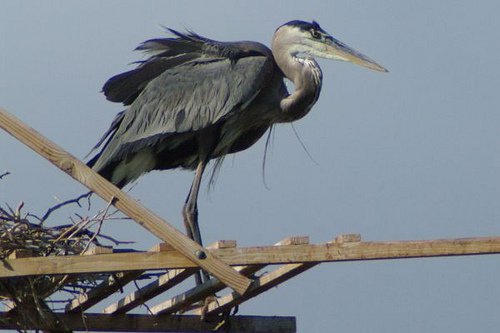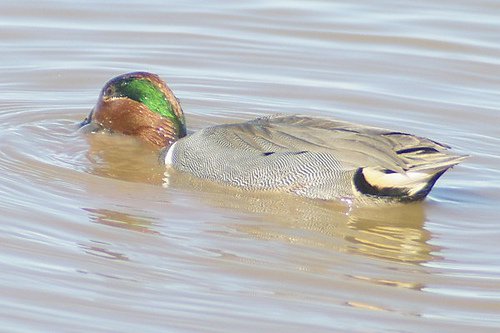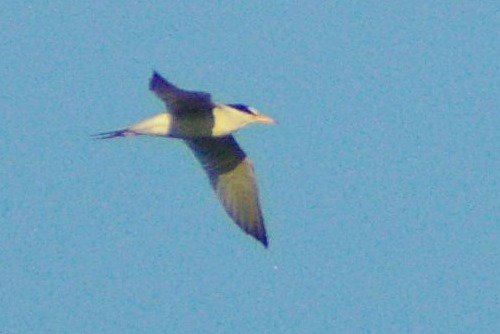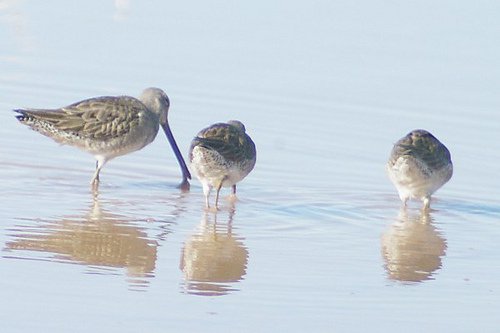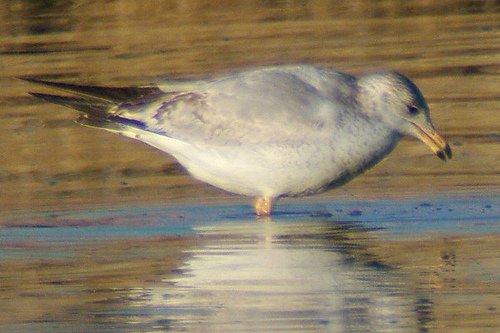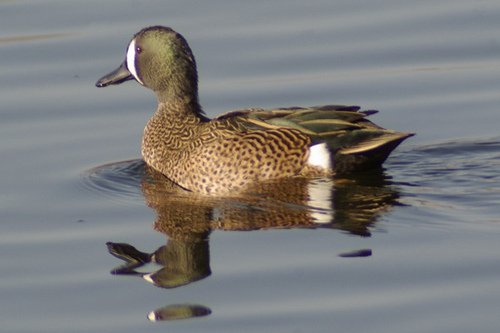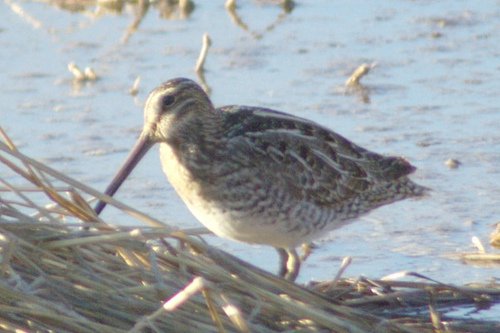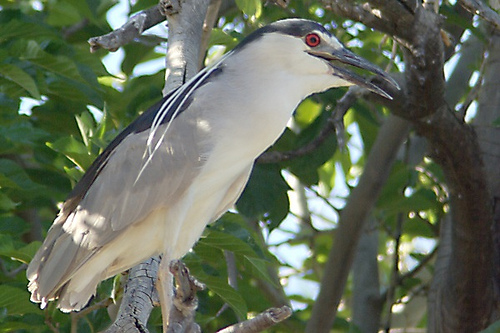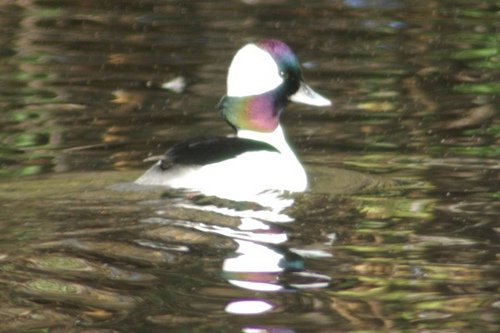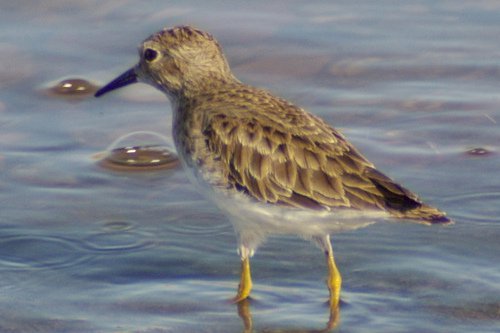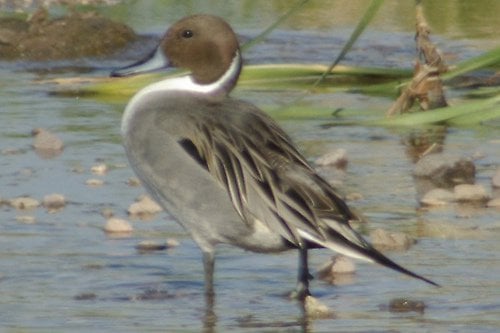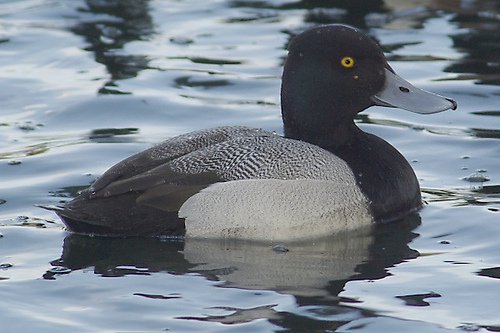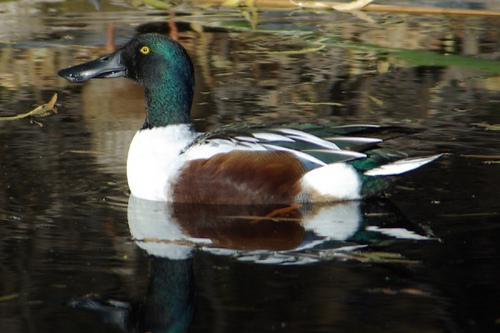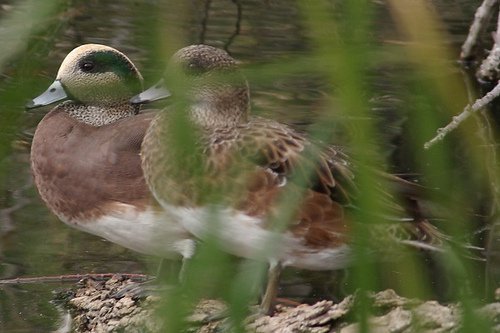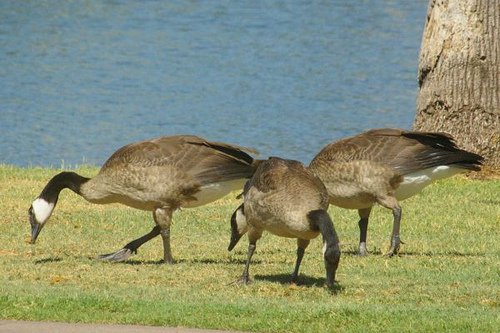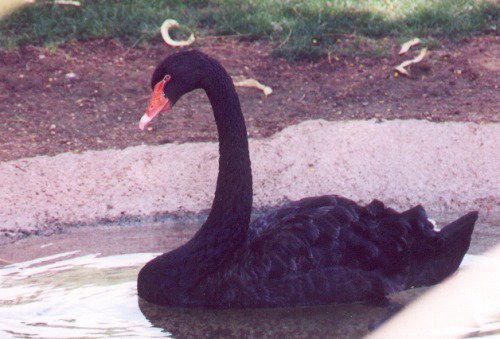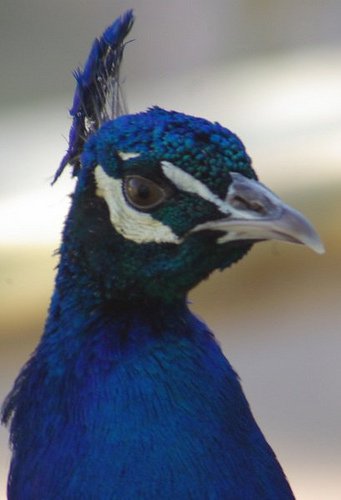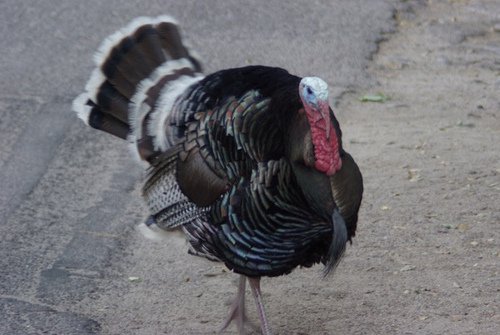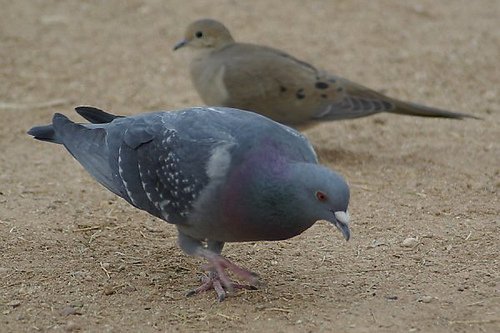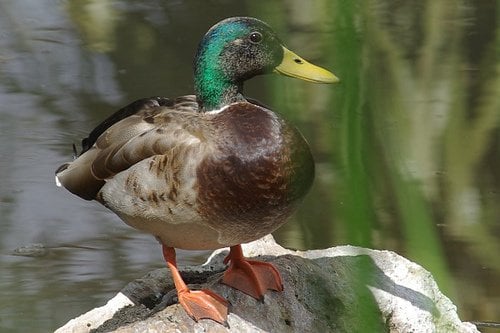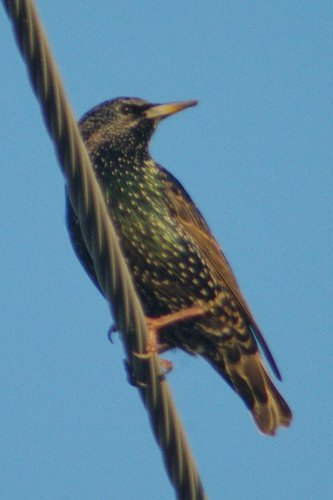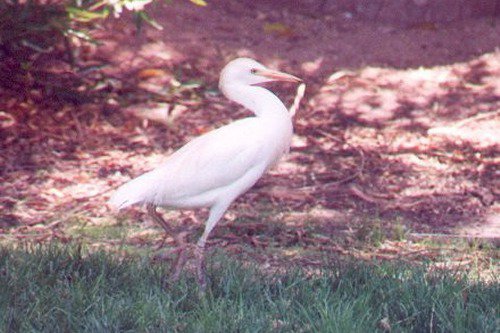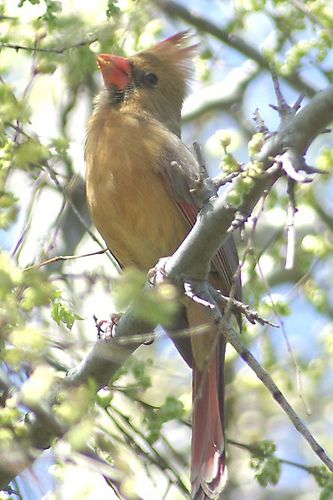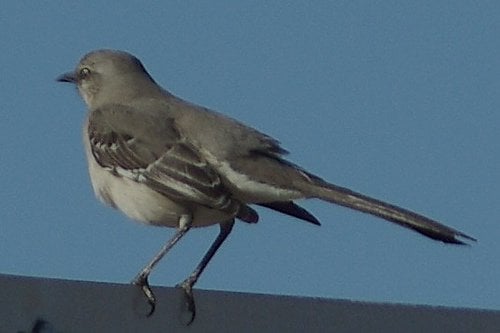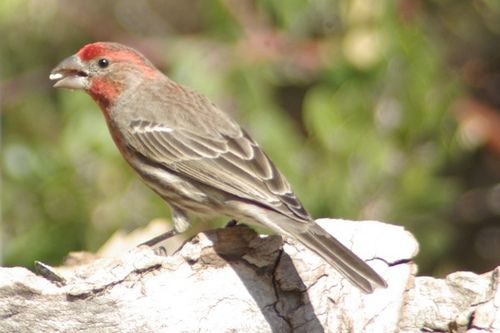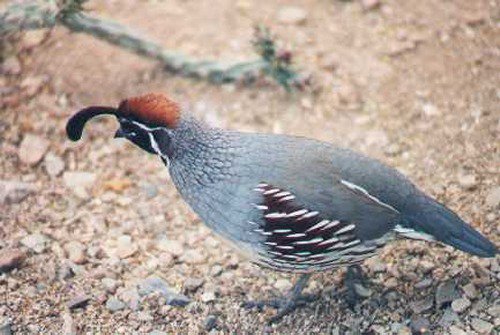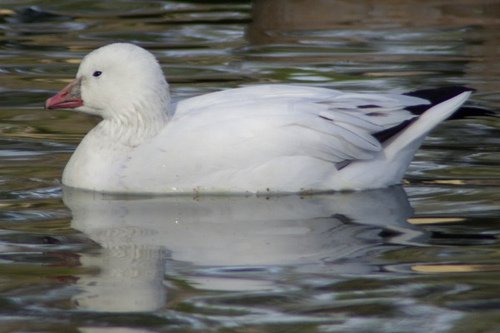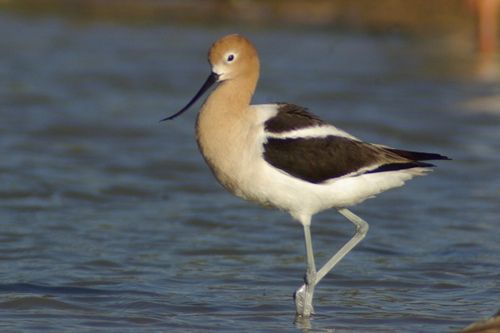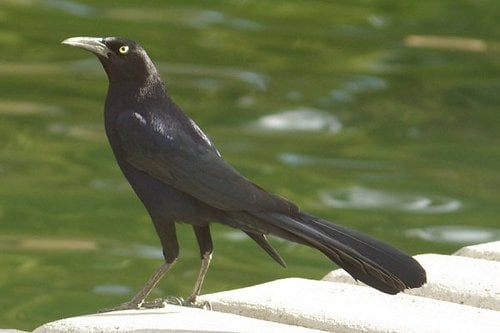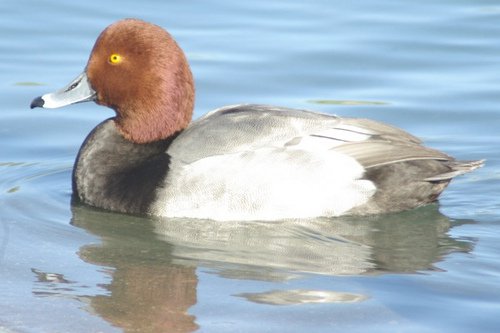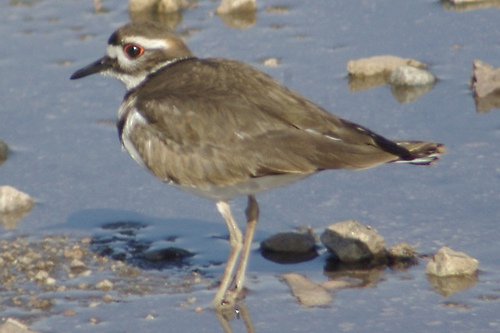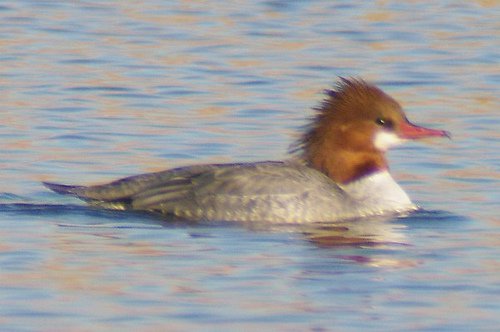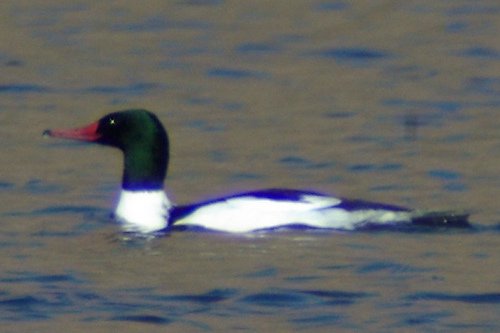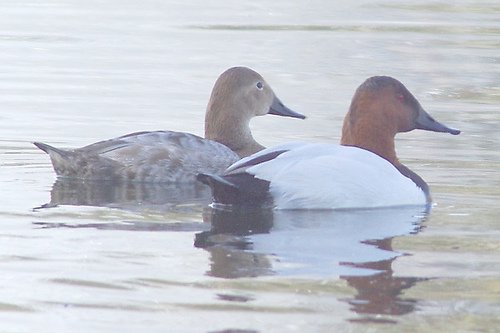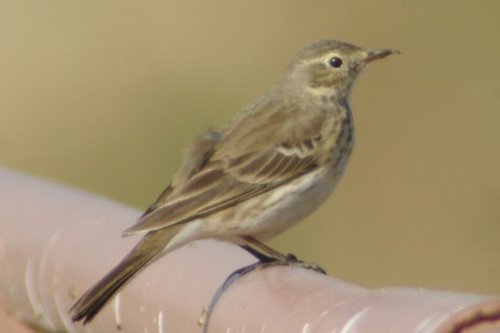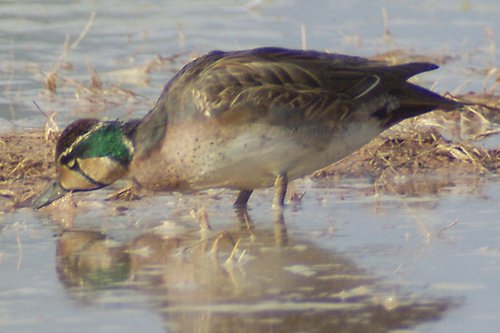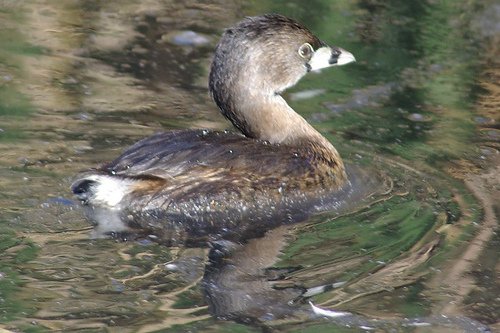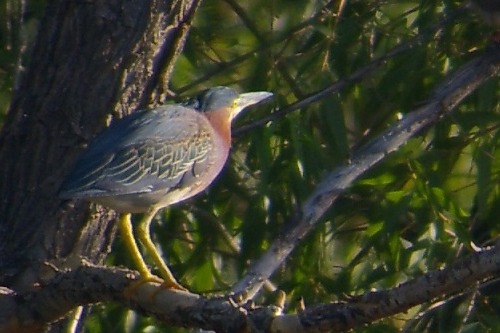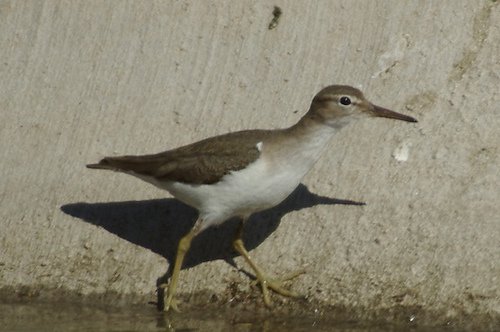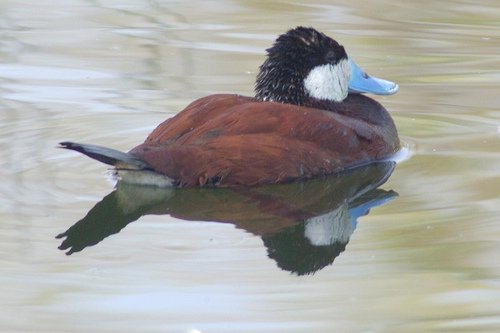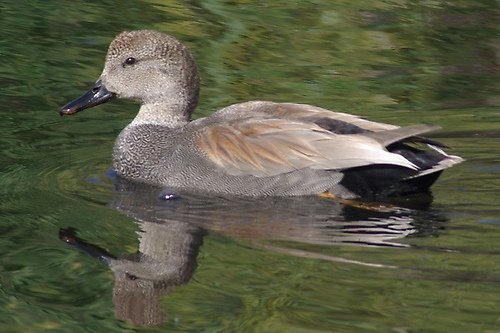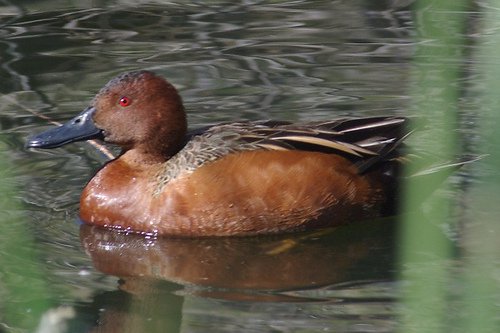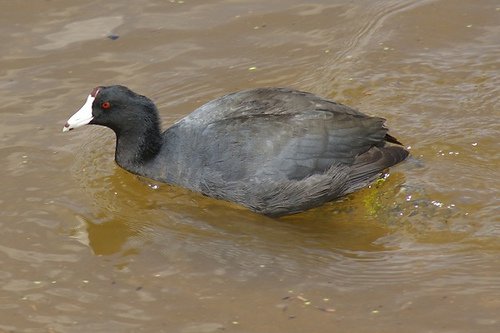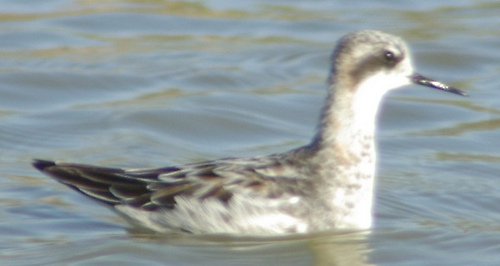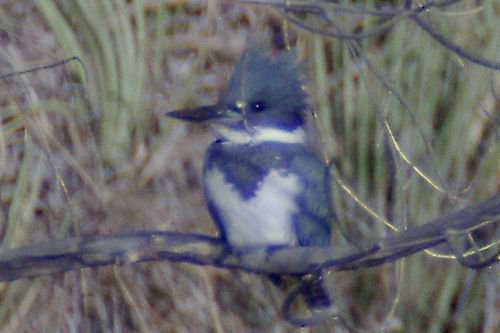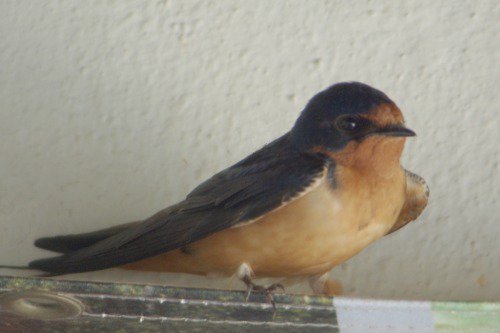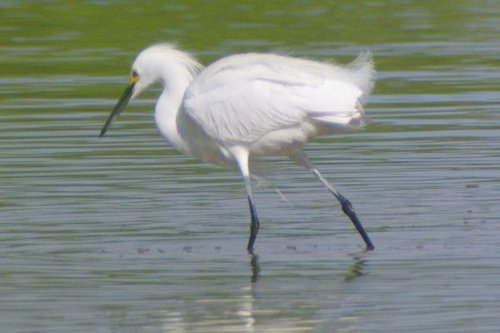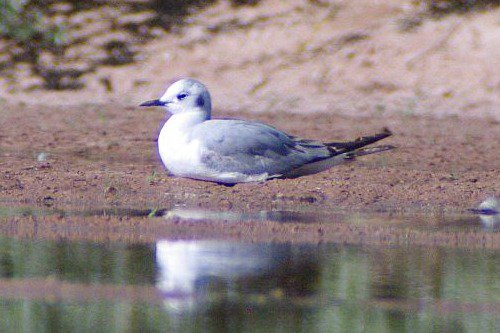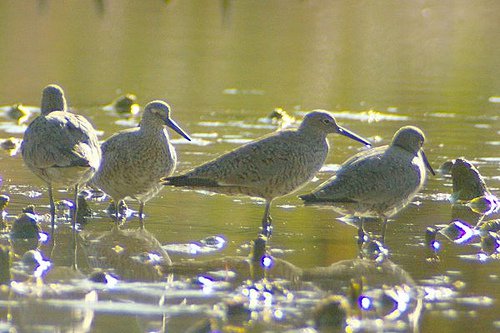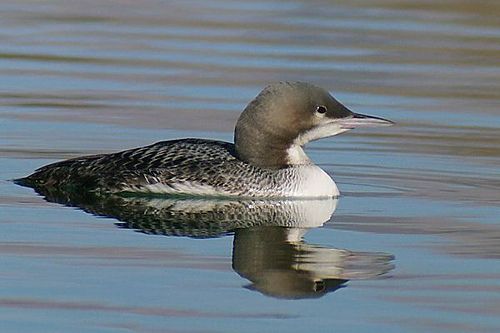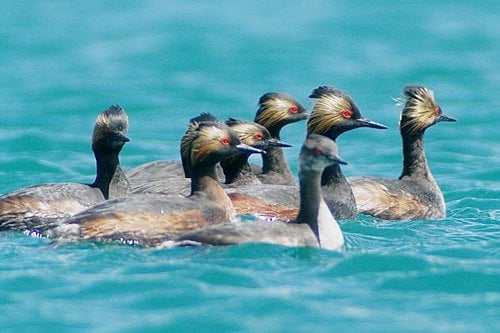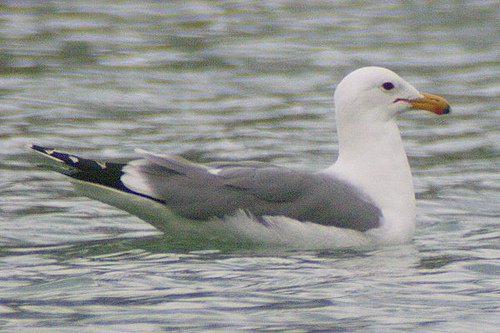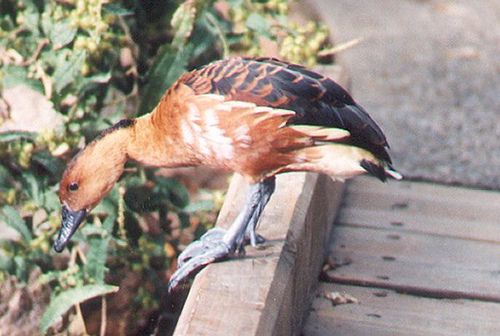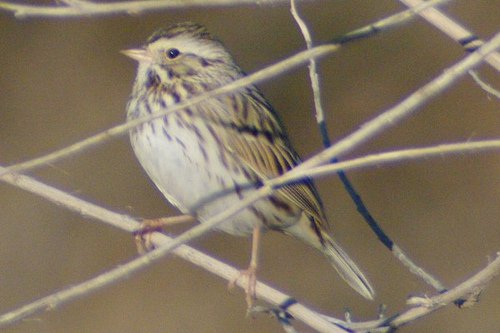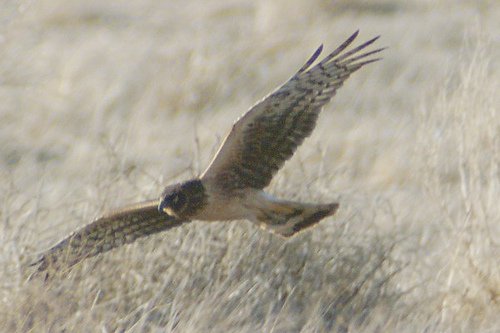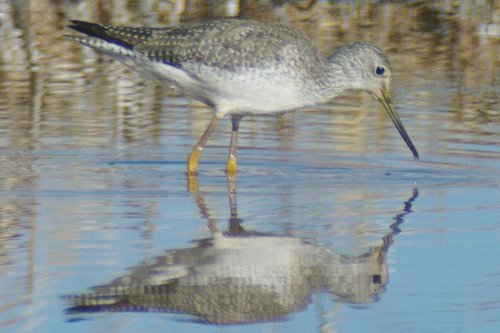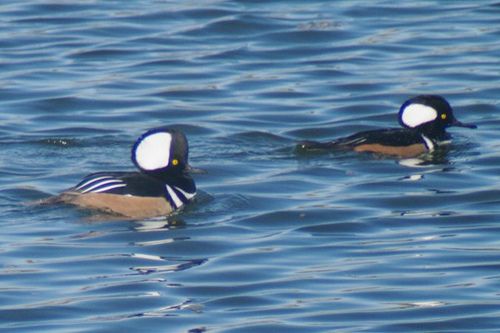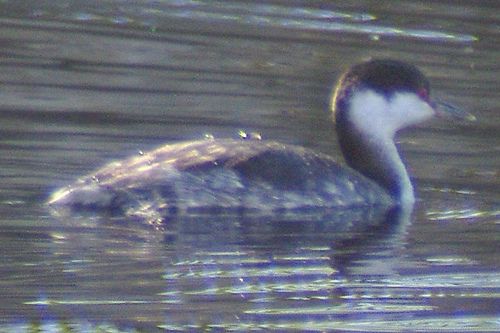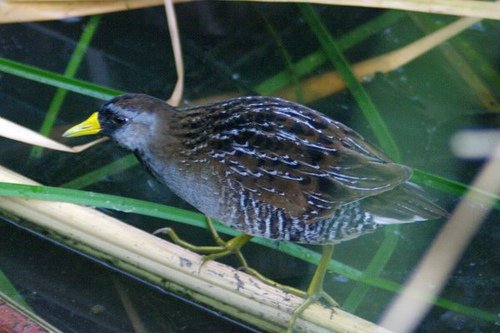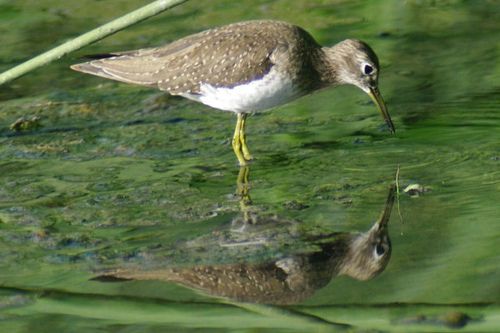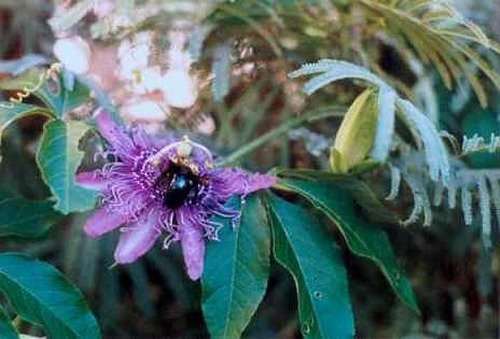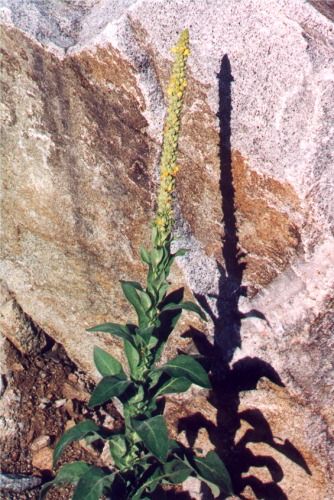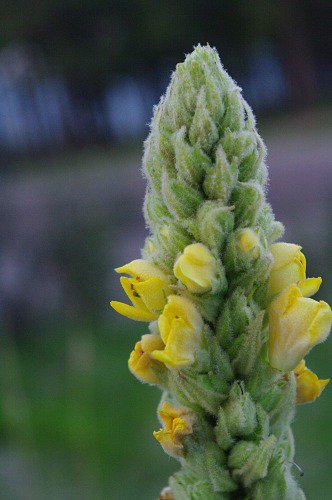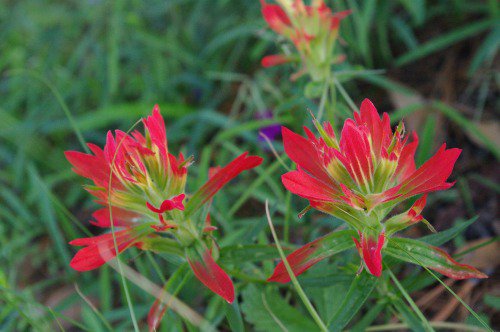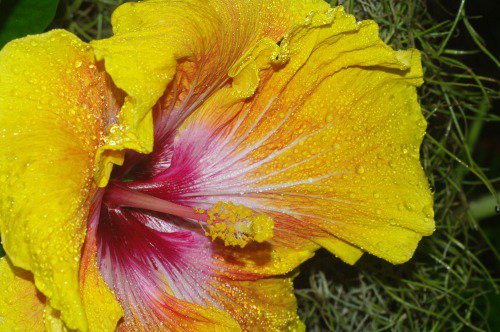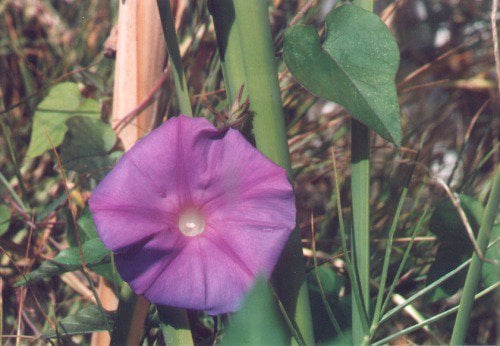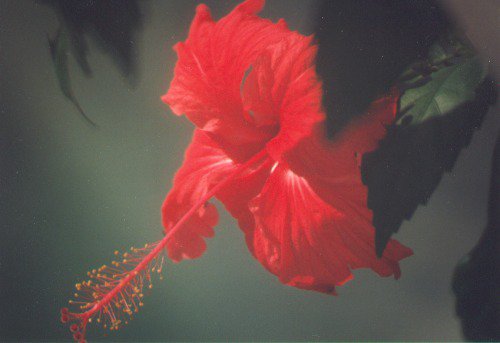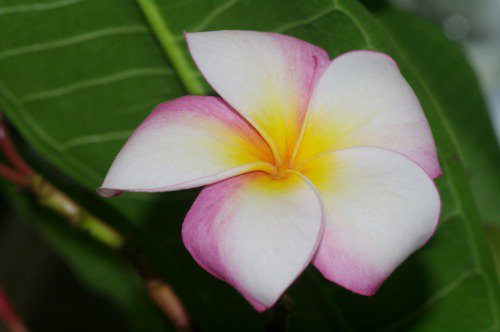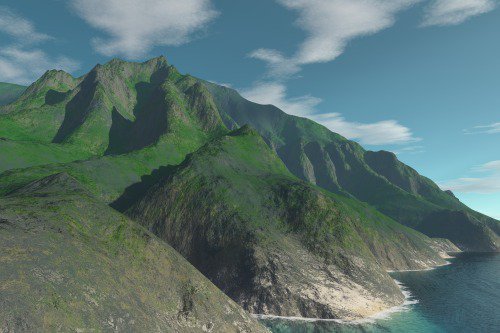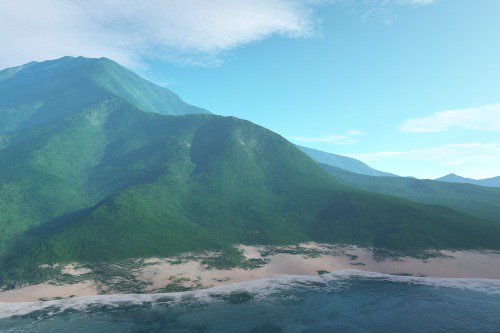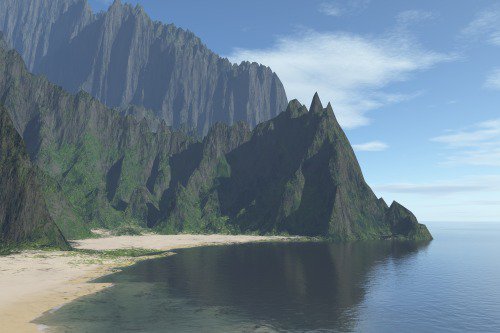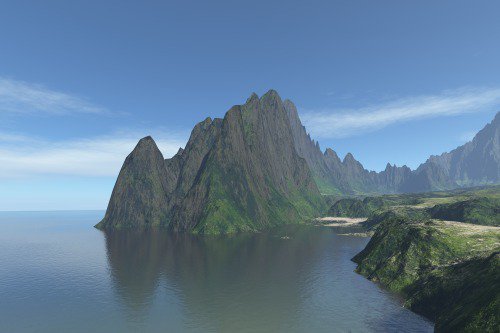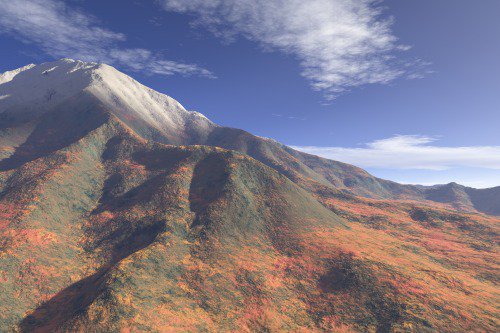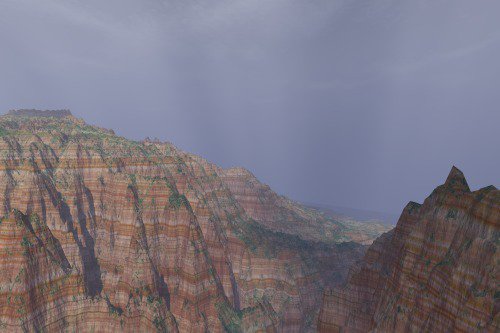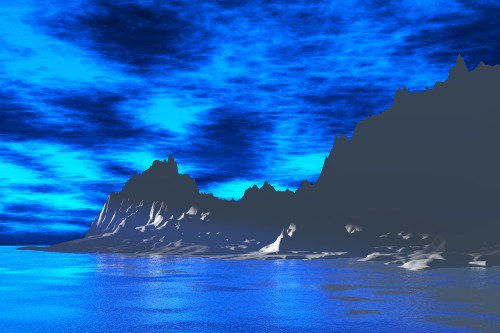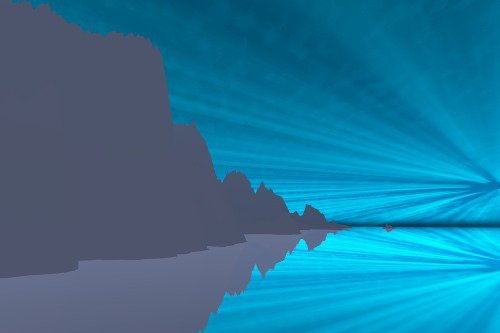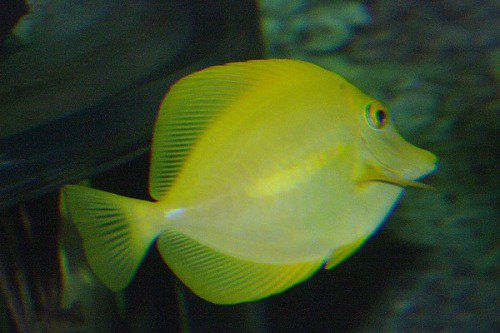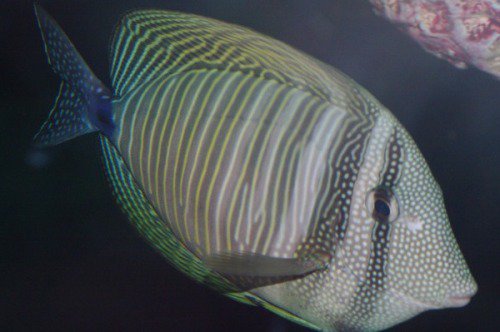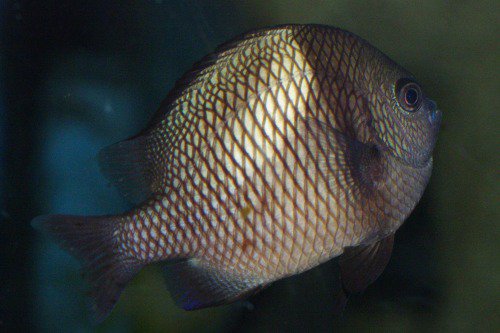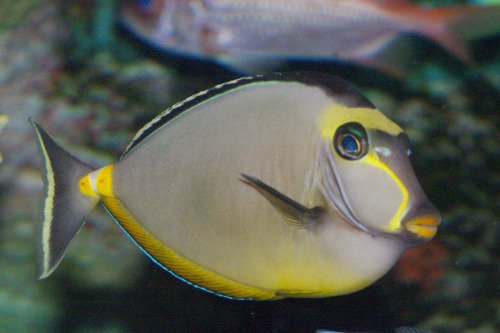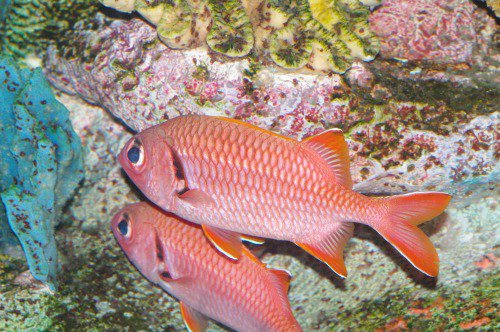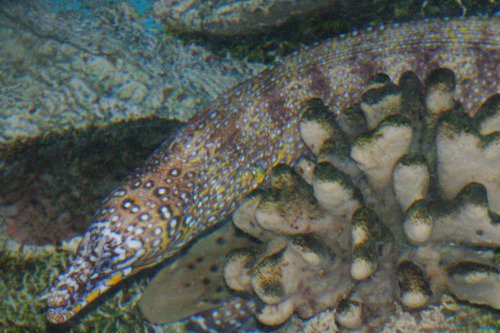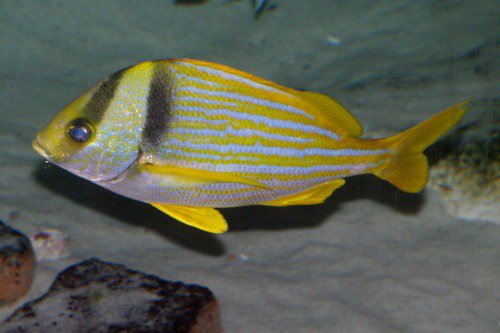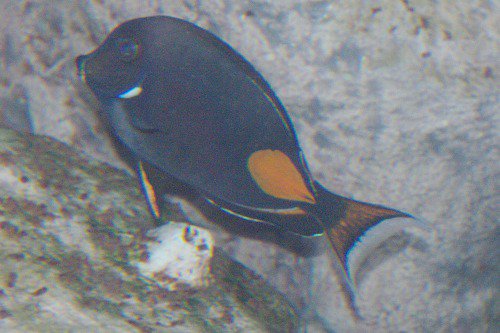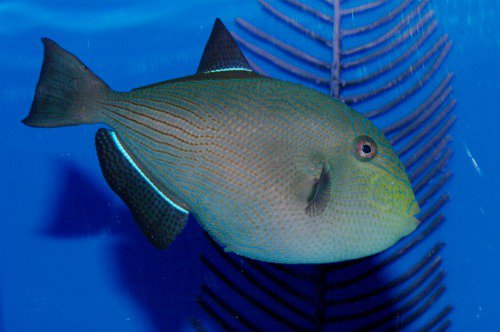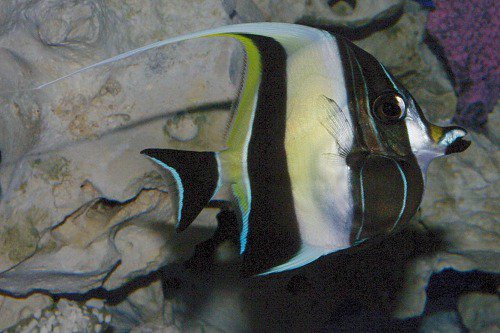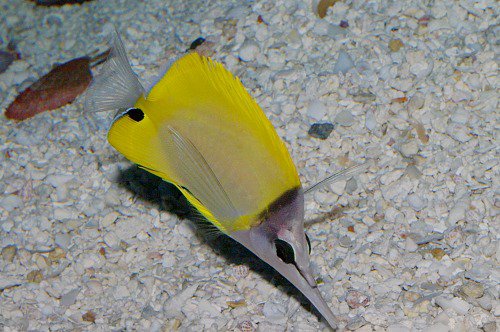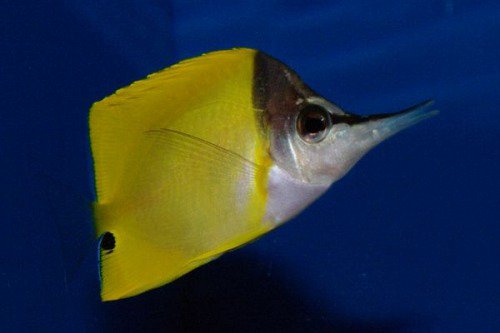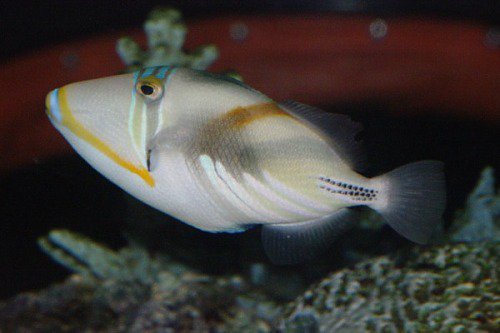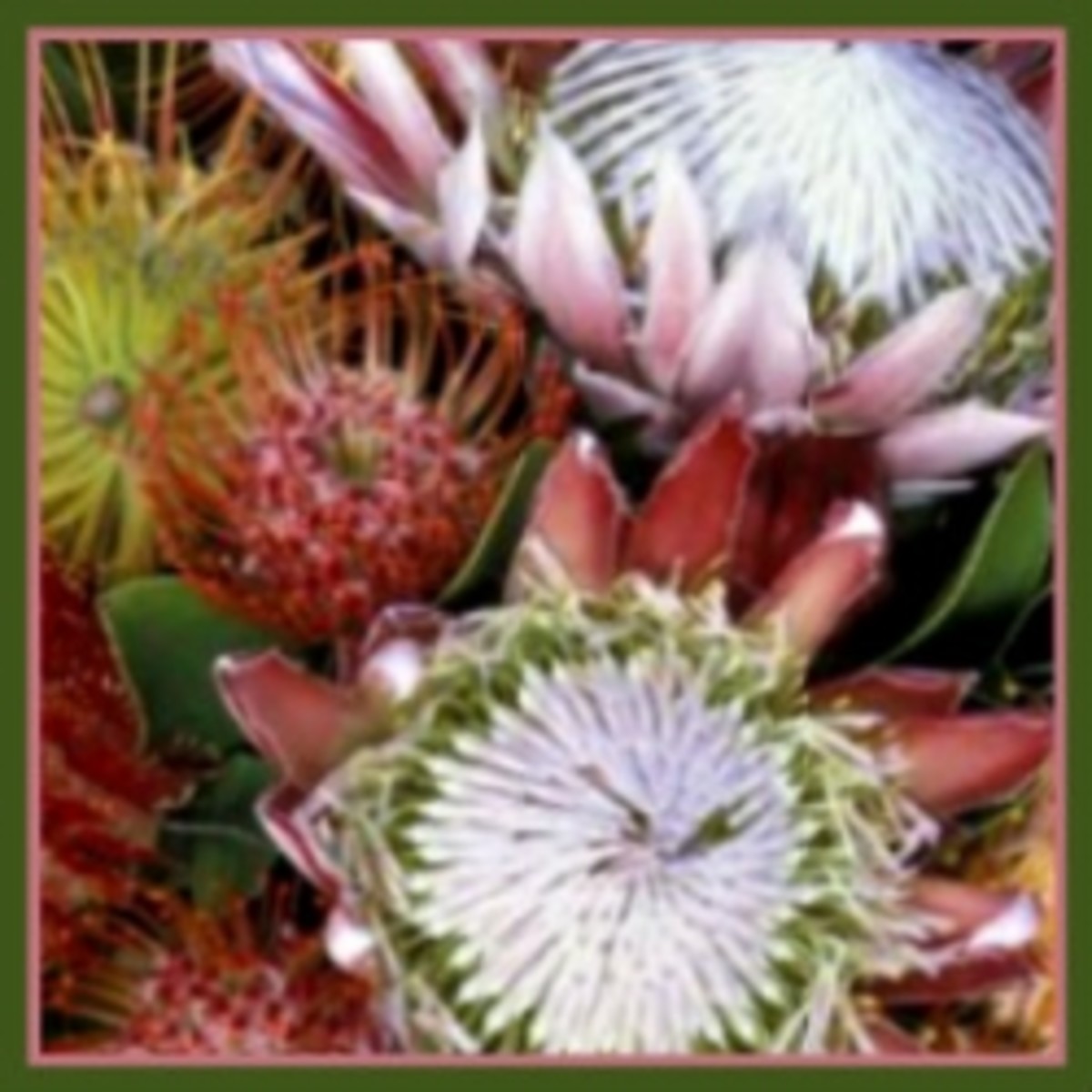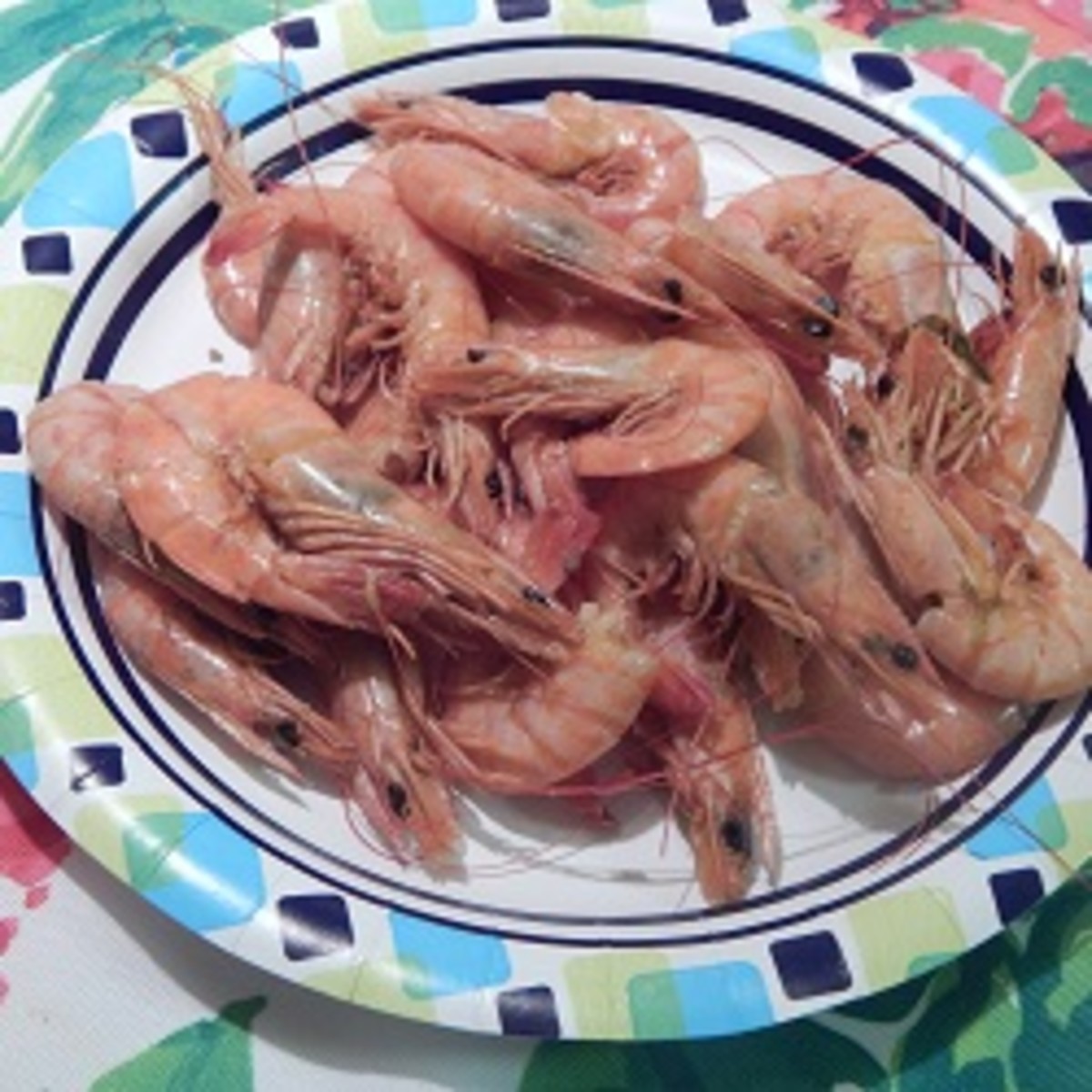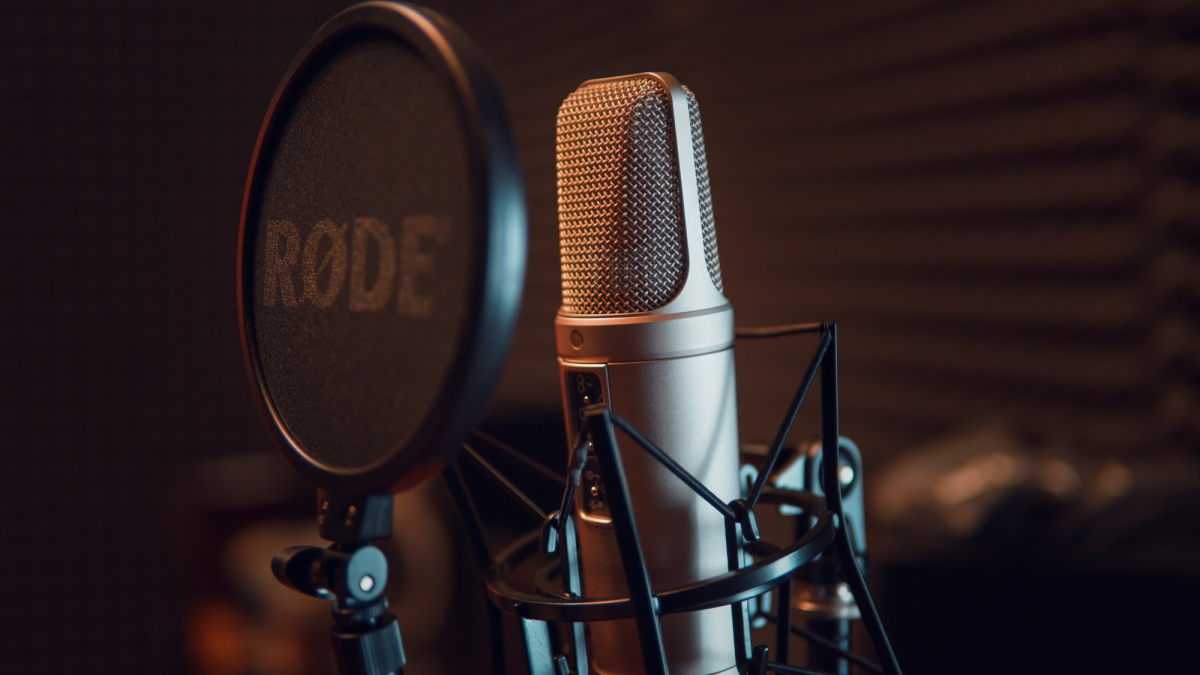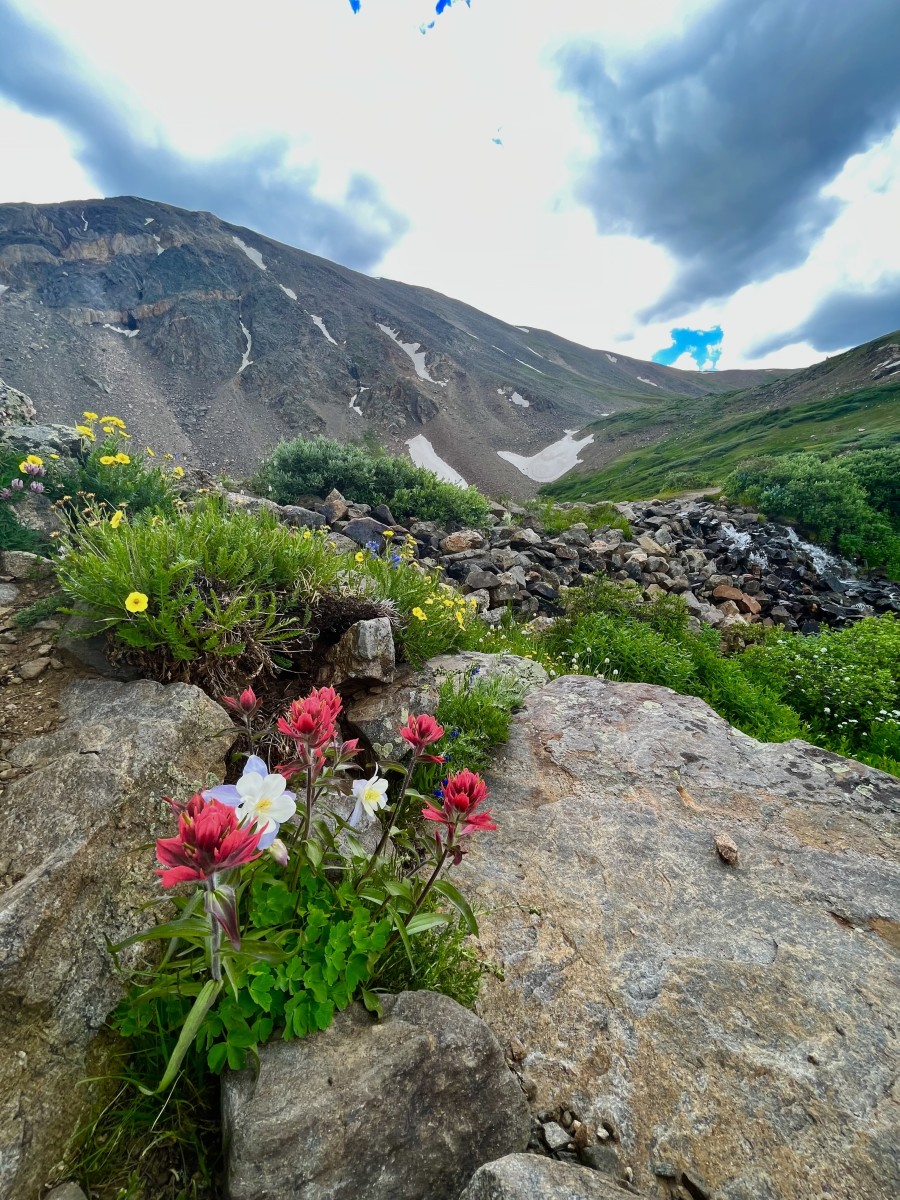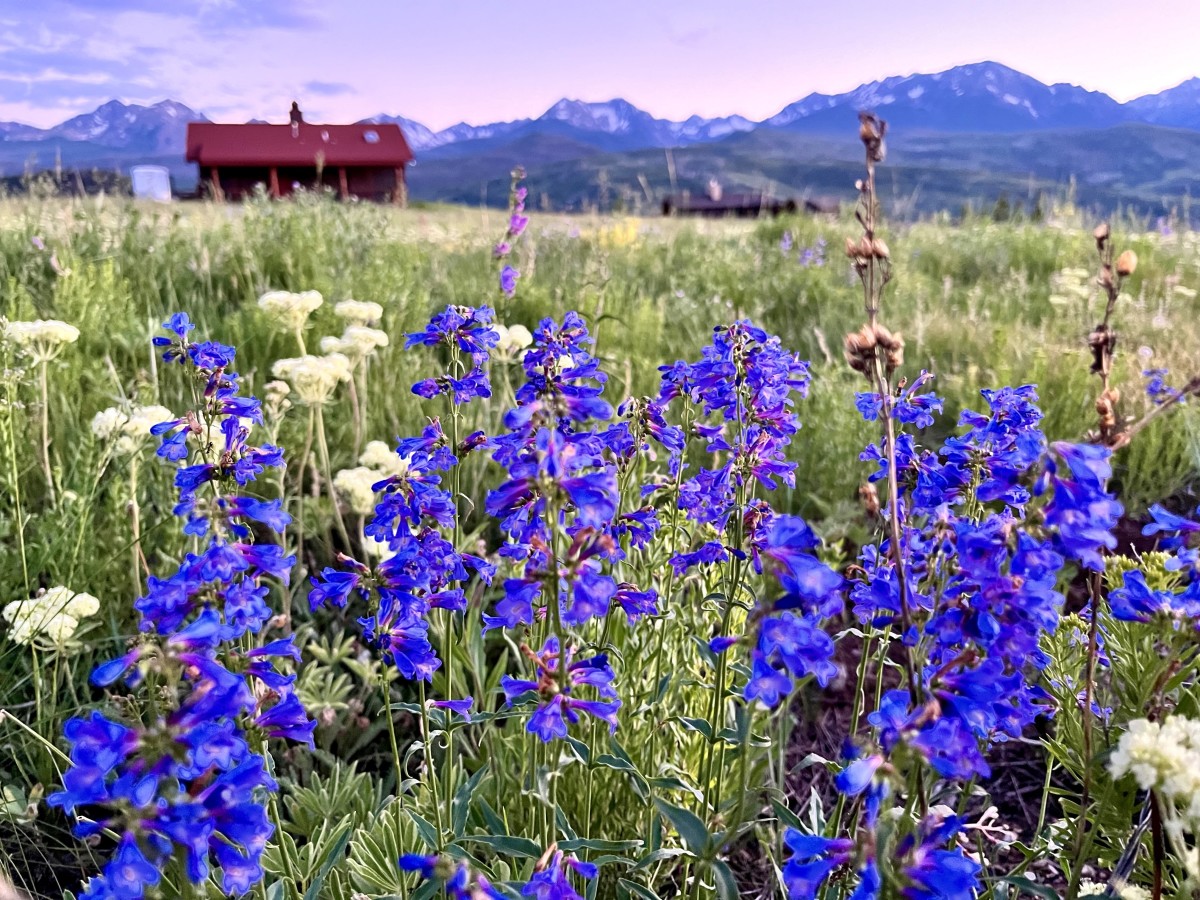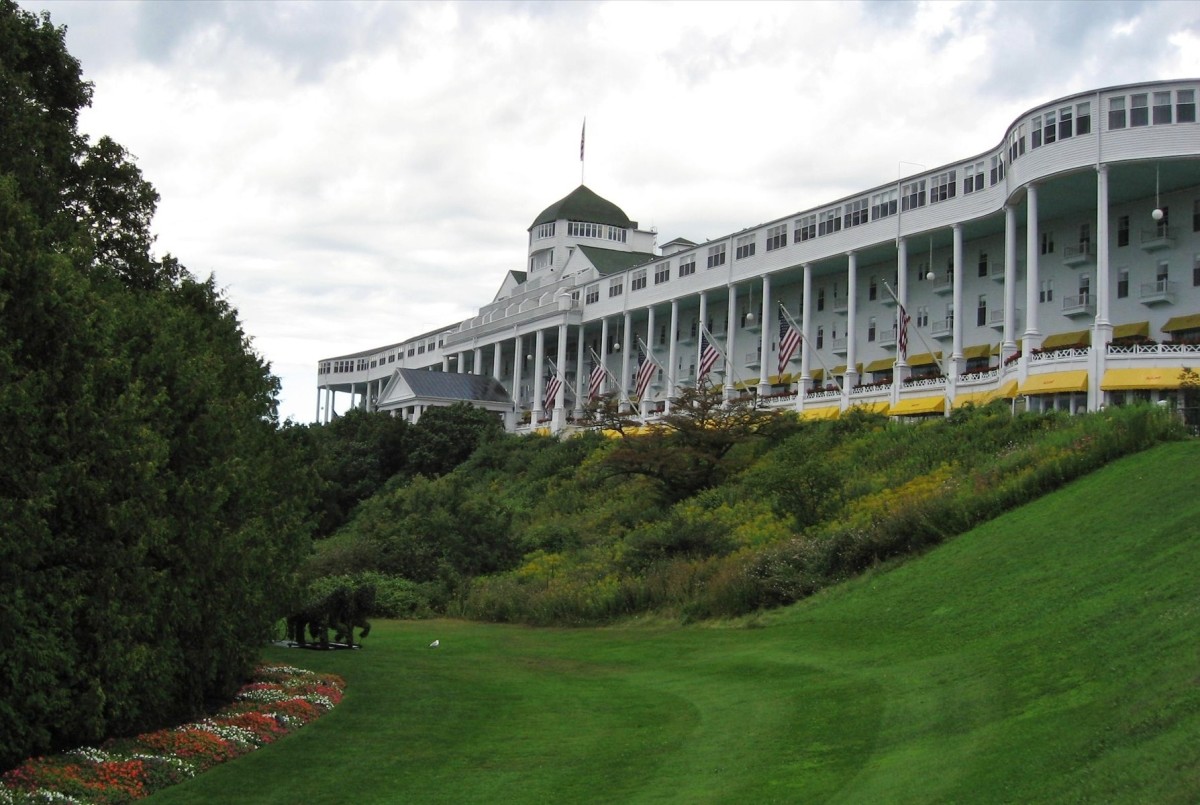Imagine Hawai'i
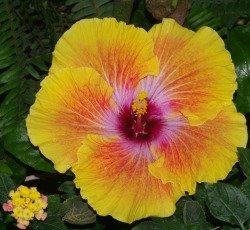
Half a Century
I have wanted to spend time in Hawai'i since I was a teenager at least. That's half a century! But I have never gotten to go. My other family members went. Five of them, in fact. But I had already left home when my parents went. I'm still jealous!
I can only think of being able to observe the beautiful tropical flowers and birds and eat the wonderful fruits. I can think of being able to drive from desert to the tropics in one day, and have time left over for pictures. I can think of visiting waterfalls, and bathing in pools. I can think of wanting to photograph the sunsets, with silhouettes of palm trees in the foreground, and waves washing up on the shore. One thing we lack in Arizona is good bodies of water for sunsets over water. Once in a great while I have been able to find one, but it's rare. One of these days I will spend some earnest time looking for lakes I can use for sunset pictures here, but nothing can compare the beaches of Hawai'i. At least not as far as I am concerned. I can imagine the food and the beautiful dancing, and snorkeling and taking underwater photos of many different kinds of fish.
I can also imagine mosquitoes, and dangers from things I have never heard of. That's the down side. But I will gladly seize the opportunity to spend time in Hawai'i anyway. Give me at least two months. Of course, costs are prohibitive there, and then there is the problem of getting there. Until the TSA stops harassing passengers, I'm not flying anywhere. And I can't fathom taking an ocean liner, either.
I just can long for a visit, and hope maybe someday I will get to go. Maybe someday...
Because I cannot visit right now, I have put together a collection of photographs I MIGHT have gotten if I had visited. These are things I have seen elsewhere, but they're the same things I might see if I visited, so now I am constructing my imaginary visit.
Photos mine unless otherwise attributed.
The Hibiscus flower is the largest I have ever seen. There is a Hibiscus growing in the Tucson Botanical Gardens tropical greenhouse, and it has at least one blossom most of the time. I think they're gorgeous! The Yellow Hibiscus is the Hawai'ian national flower. The lower left is Lantana. This plant also appears in Hawai'i.
Birds
Since I am a birder, it seems logical to start with photos of the birds of Hawai'i, that I have seen and photographed in Arizona! For the next several galleries, I present Hawai'ian birds!
Birds Native to Hawai'i
Click thumbnail to view full-size
















Introduced Birds - Not originally natives, but naturalized
Click thumbnail to view full-size











Accidental Birds - Rarely seen, birds out of their range
Click thumbnail to view full-size



















More Accidental Birds
Click thumbnail to view full-size














Orchids
And other Hawai'ian flowers
I figured one of the wonderful things I would discover about Hawai'i is their orchids. No such luck! It turns out that there are only three native orchids in Hawai'i, and they are all small, and found in really out of the way places.
The reason Hawai'i has a reputation for orchids, it seems, is that there are many, many orchid farms, because the climate is wonderful for them. However, orchids didn't get established because there is such an expanse of ocean that the seeds or other items of propagation simply couldn't make it there.
So I will concentrate on other flowers of Hawai'i, of which I have a few photos. Obviously, I didn't take those photos there. I took them in Arizona. But since this is my imaginary journey, I will show them to you anyway.
Some notes about the species shown in the gallery.
Morning Glory. The species in Hawai'i is Ipomoea indica. The species I show is probably a different species, though it is similar in color and appearance. I found it and the Hibiscus at Biosphere II, which is north of Tucson, Arizona. Hibiscus is used to make a very refreshing tea, very thirst-quenching in summer. It replenishes electrolytes.
Common Mullein, Verbascum thapsus, is a medicinal plant, very soothing and mucilaginous. It grows in abundance in the Catalina Mountains north and east of Tucson, during the summer monsoon.
Passiflora edulis is the Passionflower. Some part of the plant is edible (I think it has an edible tuber). "Edulis" means "edible". The Passionflower I show you is a different species, however. The bee is a Carpenter Bee, Xylocopa californica.
Frangipani are used to make leis. Visitors are greeted by natives who place a necklace of flowers around their necks. Obviously, the word "frangipani" is not a Hawai'ian word. I was surprised to learn that in Hawai'i, they apparently do not call this plant "frangipani". Leis can be made of other flowers as well, but it would appear that frangipani are most commonly used. I found my frangipani at the Tucson Botanical Gardens tropical greenhouse. The plant only seems to have a few blossoms at any one time.
Hawai'ian Flowers
Click thumbnail to view full-size








Hawai'ian Dance
Some years back, I was in the habit of enrolling some of our children in classes for folk dances of various parts of the world. One of the classes was for Hawai'ian dance, and I joined them. The teacher conducted classes in her home.
I found that trying to move my hips that way was a bit awkward and required some practice.
I also learned that the original music of Hawai'i did not include ukuleles. I suspect that was an import by westerners exploring the islands. A ukulele is actually like a small guitar, with only four strings. The style of music played with the ukulele is actually quite different from the chanting and drumming the natives used before the white man arrived. It is said that the guitar is the most frequently owned and played instrument in the world. The fact that it would be adapted to make a small instrument with a Hawai'ian name makes sense.
One integral component of Hawai'ian dance is sign language, done with the hands and arms. They are used to tell a story. The signs make more sense to me than the signs in American Sign Language (though they usually make a lot of sense as well). In the process of making the signs, the fingers are also moved in a particularly graceful way. The teacher explained it well. Pretend you have a pea between your thumb and fingers, and you are rolling the pea back and forth up and down your fingers.
We learned some dances with recordings of the drums and chanting, and other dances with the ipu, a percussion instrument made of a gourd, which our teacher played. I seem to vaguely remember she let us play the ipu as well.
It is something I would love to master, maybe someday, so it rests in my imagination for now. A good alternative would be belly dancing, both for fitness reasons.
Cuisine
We have two Hawai'ian restaurants in town. I haven't been to either one. Apparently the one I used to go to is closed. I loved the way it was in a very Hawai'ian style building with Hawai'ian decorations.
I don't care much for pineapple. I was allergic to it as a child, I'm told. But pineapples figure prominently in Hawai'ian cuisine, as does coconut, which I love very much. Somehow, the way they cook things, I don't mind the pineapple. I learned that jicama is also a favored local food. That surprised me because I consider it a Mexican vegetable. It is pronounced "hih' kah mah". It is white and crunchy and a little sweet. I like it on occasion.
Taro, sweet potato, and breadfruit are also commonly eaten. In my imagination, breadfruit is a complete food, but I could be totally mistaken. It reminds me of the fact that after Noah's flood, so many very nutritious plant foods were no longer available for one reason or another, which is one reason why God commanded human beings to eat meat.
Would you believe SPAM is a popular food on Hawai'i? I'm not talking about the bad emails people send you. I'm talking about the meat. It was brought over by troops, and it caught on. I would occasionally eat Spam, but I was never wild about it.
Cattle were also imported, and now beef is part of the cuisine. And of course, they eat a lot of different kinds of fish. They say that teriyaki is a favorite flavor, and I did notice that.
Teriyaki is of course Japanese soy sauce with a few things added.
Hawai'i is a mixture of different ethnic groups. Except for the natives, these are all people who immigrated there. This has obviously influenced its cuisine.
I love living in an ethnically diverse area. That's one reason I live where I do. So from that standpoint, Hawai'i would also appeal to me.
According to the 2010 United States Census, Hawaii had a population of 1,360,301. In terms of race and ethnicity, the state was 38.6% Asian, 24.7% White (22.7% Non-Hispanic White Alone), 23.6% from Two or More Races, 10.0% Native Hawaiians and Other Pacific Islanders, 8.9% Hispanics and Latinos of any race, 1.6% Black or African American, 1.2% from Some Other race, and 0.3% American Indian and Alaska Native.
— WikipediaBaibala Hemolele
I once started making a Hawai'ian dictionary using the Bible as a Rosetta Stone. I had about 100 words in it when I got distracted by something else. Using the Bible is a fairly easy way to make a dictionary of another language. You already are familiar with the Bible, or have access to a King James Version (which is often used as one of the texts in translating). I usually use just the Bible in that language. I find unique words, and by comparing these words in adjacent verses, I can usually figure out what's what.
The Hawai'ian language has a limited number of consonants. The little time I have spent studying it leads me to believe that it might be a bit of a challenge to learn, simply because many words are used with different meanings.
Here are some selected Bible passages in Hawai'ian:
No ka mea, ua aloha nui mai ke Akua i ko ke ao nei, nolaila, ua haawi mai oia i kana Keiki hiwahiwa, i ole e make ka mea manaoio ia ia, aka, e loaa ia ia ke ola mau loa. Ioane 3:16.
The Lord's Prayer:
I ko makou Makua iloko o ka lani, e hoanoia kou inoa. E hiki mai kou aupuni; e malamaia kou makemake ma ka honua nei, e like me ia i malamaia ma ka lani la; E haawi mai ia makou i keia la i ai na makou no neia la; E kala mai hoi ia makou i ka makou lawehala ana, me makou e kala nei i ka poe i lawehala i ka makou, Mai hookuu oe ia makou i ka hoowalewaleia mai; e hoopakele no nae ia makou i ka ino; no ka mea, nou ke aupuni, a me ka mana, a me ka hoonaniia, a mau loa aku. Amene. Mataio 6:9-13
Psalm 23:
Halelu XXIII
O Iehova ko'u Kahuhipa; Aole o'u mea e nele ai. Nana no wau i hoomoe iho ma na aina uliuli: Ua alakai oia ia'u ma kapa wai lana malie. Ke hoala mai nei oia i ko'u uhane: Ke alakai nei no oia ia'u ma na ala maikai no kona inoa. Oiaio, ina e hele au ma ke awawa malu o ka make, Aole au e weliweli i ka poina: no ka mea, o oe pu kekahi me au; O kou mana, a me kou kookoo, o ko'u mau mea ia e oluolu ai. Ke hoomakaukau mai nei oe i ka papaaina na'u ma ke alo o ko'u mau enemi: Ua kahinu mai oe i kuu poo me ka aila; Ua piha a hu ko'u kiaha. Oiaio, e hahai mau ana ia'u ka pono a me ke aloha i na la a pau o ko'u ola ana; A maloko o ka hale o Iehova owau e noho mau loa aku ai.
The Romans Road:
No ka mea, ua lawehala na mea a pau, ua nele hoi i ka nani o ke Akua. Roma 3:23
E like me ka mea i palapalaia, Aole loa he mea pono, aole hookahi. Roma 3:10
No ka mea, o ka uku no ka hewa he make ia; aka, o ka haawina o ke Akua, o ke ola mau loa ia, ma o Iesu Kristo la o ko kakou Haku. Roma 6:23
No ia mea, me ka puka ana mai o ka hewa iloko o ke ao nei ma ke kanaka hookahi, a ma ka hewa mai ka make; a pela i kau mai ai ka make maluna o na kanaka a pau, no ka mea, ua pau lakou i ka hana hewa. Roma 5:12
No ka mea, a ia kakou i nawaliwali ai, a i ka wa pono, make iho la o Kristo no ka poe pono ole. Roma 5:6
Aka, ua hoakaka mai ke Akua i kona aloha ia kakou, no ka mea, i ka wa e hewa ana kakou, make iho la o Kristo no kakou. Roma 5:8
A i hoomaopopoia hoi o ke Keiki a ke Akua me ka mana, ma ka uhane hoano, mahope o ke alahouana mai waena mai o ka poe make; Roma 1:4
E ike ana hoi, ua hoalaia mai o Kristo mai waena mai o ka poe make, aole e make hou; aole hoi e lanakila hou ka make maluna ona. Roma 6:9
No ka mea, ina e hooiaio oe me kou waha i ka Haku ia Iesu, a e manaoio hoi iloko o kou naau, ua hoala mai ke Akua ia ia mai waena mai o ka poe make, e ola oe. Roma 10:9
No ka mea, o ka mea e kahea aku i ka inoa o ka Haku, e ola ia. Roma 10:13
No ka mea, ke manao maopopo nei au, aole e hiki i ka make a me ke ola, aole i na anela a me na alii a me na mea ikaika, aole hoi i na mea o neia wa a me na mea mahope aku, aole hoi i na lunakanawai, Aole hoi i ke kiekie a me ka hohonu, aole hoi i kekahi mea e ae i hanaia, ke hookaawale mai ia kakou, mai ke aloha mai o ke Akua, ina no iloko o Kristo Iesu o ko kakou Haku. Roma 8:38-39
The Romans Road is a frequently used collection of verses from the book of Romans, which outlines the essential doctrines of the Christian faith.
Terragen
Terragen is a landscape rendering program. You design a landscape, and it will calculate the color of each pixel in the final image. You can put a real terrain into the program, and then design the surface (trees, dirt, etc.), the sky, and the water. There are actually two versions of Terragen. The first is known as Terragen Classic, and it is what I used for these images.
I obtained the actual terrains from MapMart.com, for all of the islands in the cluster of islands we call Hawai'i. MapMart sells various kinds of terrains for commercial use, but obtaining the necessary DEMs for Terragen is free.
I then used a terrain to create images that looked like Hawai'i to me. I looked at photos of Hawai'i, and tried to duplicate the look of the mountains, the water, and the beach. Some beaches are volcanic, and thus quite dark. I didn't worry about that. I allowed myself a certain amount of artistic license.
Some people cannot tell that these are not photographs, but indeed, they are not!
After awhile, I cut loose and let my imagination do more to the scenes. I added features not typical of Hawai'i, or played with the sky. Sometimes I changed the terrain a bit.
Here are some of the images I was able to design.
You can see more of my Terragen work here: Terragen
Terragen Images - Real and fantasy scenes with Hawai'ian terrains
Click thumbnail to view full-size







Have You Ever Been to Hawai'i? - Would you like to visit in the future?
Have you ever been to Hawai'i?
Fish
Fish are very much a part of Hawai'i. There are many wonderful sea habitats in the area, and snorkeling and scuba diving are favorite activities. They also have glass bottomed boats you can ride in. And of course, some of the fish are edible.
These are some of the fish of Hawai'i. I obviously got these pictures someplace else, but I share them with you specifically because I know they live there.
The Fish of Hawai'i
Click thumbnail to view full-size












I hope you enjoyed your visit
And I hope someday I can come back with photos I REALLY took in Hawai'i.
It is a precious place. I hope it will always be preserved as it is.
Books on Hawai'i
These are some books on Amazon that look interesting. I have ordered two of them for myself.
Hawaii's Hidden Paradise
Hawaii: A Pictorial Celebration
by Ellie Crowe
Hawaii: From Origins To The End Of The Monarchy
by Brien Foerster
Hawaii (America)
by Tanya Lloyd Kyi

